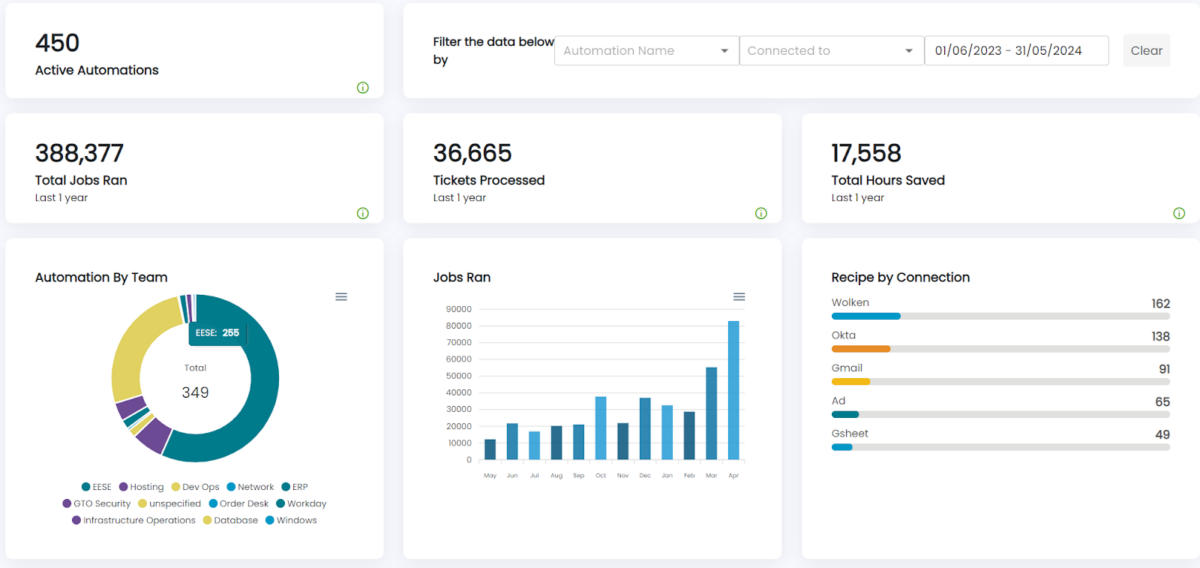Stanley Toh, Head of End User Services and Experience at Broadcom, found himself between a rock and a hard place in 2018. Broadcom’s aggressive acquisition strategy—encompassing companies like CA Technologies, Symantec, and most recently VMware—had accelerated its growth into a semiconductor giant with $36 billion in annual revenue, but had also created new complexities for Stanley and his team. With every additional acquisition, Broadcom’s backlog of IT requests grew to new heights and threatened employee productivity and service quality. Stanley faced the challenge of scaling IT operations, and was about to embark on an automation journey that would result in thousands of hours per month saved and no additional IT headcount needed in spite of the astronomical growth in Broadcom’s headcount.
With Rapid Growth Came IT Challenges
Broadcom’s frequent acquisitions and growing IT demands had put the company in a state of constant flux. Broadcom’s IT department was facing a high volume of complex requests, creating an overwhelming backlog. This was in turn negatively impacting employee productivity and the end-user experience. With this at the top of Stanley’s mind, he knew it was critical to onboard and offboard employees quickly and accurately.
Orchestrating Solutions with Integration and Automation
Stanley was determined to improve efficiency, and began by focusing on the critical processes of new hire onboarding and employee offboarding. He streamlined the provisioning of services, devices, and access rights for new employees brought on through acquisition while simultaneously providing managers with timely status updates through Workday and Okta automations, facilitated by Workato. With offboarding, Stanley drove the adoption of a secure process that consisted of immediate deactivation of identity and access, a transfer of ownership service, document archiving, and asset recovery. These all contributed to minimizing delays and removing security risks.
The Results
Stanley’s results were remarkable and the benefits of automating the onboarding and offboarding processes. Provisional emails to new employees were sent 50 times faster. As Stanley proudly noted, ‘Right now, we have over 300 automations running between 105,000 to 120,000 jobs a month…we save about 6,500 human hours a month. That is efficiency for you.’ Most notably, Stanley managed to maintain the size of his IT department even as the company’s workforce grew by 43%, demonstrating the scalability and efficiency achieved through automation.

The Case for Automation
Stanley deftly addressed the question “Why automate?” during his talk at Workato’s annual conference, Automate 2024. He urged attendees to consider that avoiding investment in automation will cost far more than the investment in automation. Over time, automation optimizes costs, improves efficiency, and also enhances scalability while reducing efforts. Stanley’s journey at Broadcom illustrates that leveraging automation can solve business-critical challenges and can build a foundation for the future: a philosophy for remaining competitive in a rapidly changing industry.
